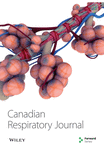Characterizing and Developing Strategies for the Treatment of Community-Acquired Pneumonia at a Community Hospital
Abstract
BACKGROUND: Patients admitted to Lions Gate Hospital, North Vancouver, British Columbia, with a primary diagnosis of community-acquired pneumonia (CAP) have a mean length of stay (LOS) of 9.1 days compared with 7.9 days for peer group hospitals. This difference of 1.2 days results in an annual potential savings of 406 bed days and warranted an investigation into the management of CAP.
OBJECTIVE: To characterize and provide recommendations for the management of CAP.
METHODS: A retrospective chart review of patients admitted with a primary diagnosis of CAP between May 1, 2000 and August 31, 2000.
RESULTS: Fifty-one patients were included in the study, with a mean LOS of 9.9 days and a median LOS of five days. Based on pneumonia severity index scores calculated for each patient, eight patients (16%) were admitted inappropriately. Initial empirical antibiotic choices were consistent with the Canadian CAP guidelines in 27 patients (53%), with inconsistencies arising mainly because cephalosporin or azithromycin monotherapy regimens were prescribed. Step-down from intravenous to oral antibiotics occurred in approximately 20 patients (39%). An additional 12 patients (24%) could have undergone step-down, and step-down was not applicable in 19 patients (37%). The potential annual cost avoidance from implementing admission criteria based on a pneumonia severity index score, applying step-down criteria and promoting early discharge criteria was estimated to be $220,000.
CONCLUSIONS: Considerable variability exists in the treatment of CAP. A CAP preprinted order sheet was developed to address the issues identified in the present study and provide consistency in the management of CAP at Lions Gate Hospital.




